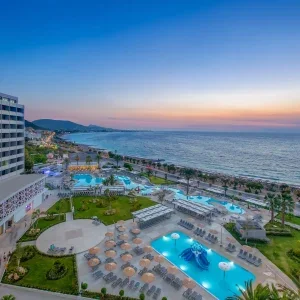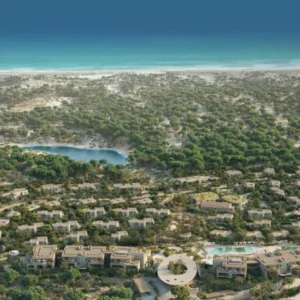It is globalisation in its purest from: European and North American operators dominating the international hotel industry while their domestic operations play an ever-smaller role in driving their growth. Back home, construction lending is at a virtual standstill and the post-downturn recovery remains sluggish at best, so executives headquartered in London, Paris or New York are accruing serious air miles, touching down in the fast-growing economies of Asia and the Middle East, and posting bullish expansion forecasts that make little reference to their traditional markets.
But, however much time one’s leaders spend on the road, geographical detachment poses some fundamental issues. Large, growth-oriented hotel groups have now universally adopted asset-light business models, dependent upon the signing of management and franchising agreements. Such an approach enables rapid brand expansion, but it is also dependent upon a level of interpersonal relationships and local knowledge that is not easily attained during a 48-hour whistle-stop tour.
Operators have thus invested a huge amount of time and money establishing regional headquarters where sales teams can drive operations from the ground. Giving complete autonomy to regional offices also has its drawbacks, however, potentially isolating the big wigs back home, creating disjointed business entities and undermining the consistency upon which any successful global brand is founded.
The challenge is therefore finding ways to amass requisite local know-how and flexibility within the context of a global business model. It was in search of answers that Starwood CEO Frits van Paasschen took the unprecedented step of relocating his entire senior leadership team from White Plains, New York, to Shanghai for an entire month in 2011.
The Shanghai experiment
"It was based on the simple fact that we had 100 hotels under construction in China at the time – more than a third of our global pipeline," he explains. "My intent was to draw attention to the extraordinary growth that the country was experiencing and to have my team get a first-hand look at how it was being driven."
"Getting to where the growth is" marks a prime example of the shifting global corporate mindset. Van Paasschen cites the Shanghai experiment as engendering a heightened level of agility within the group, attributing much of its success in China over the past two years to lessons learnt and friends made while in-country. It also got the creative juices flowing.
"After the financial crisis and what has been a steady but tepid recovery in both North America and Europe, there’s something so energising about going to a place that’s looking to the future, has ambitious plans and feels as though its day has come," he enthuses. "So much of our business is now in markets that are experiencing rapid economic transformations and one must recognise that, even if you’re sitting somewhere that’s growing more slowly, it doesn’t necessarily reflect the dynamics of what’s happening elsewhere."
Arabian outlook
In fact, the CEO was so pleased with Shanghai’s impact that in March of this year his executives were packing up their desks once again and boarding a plane for Dubai. The band was back on the road.
After New York, Dubai is the location where Starwood has its most hotels. This meant that accommodation was never going to be a problem, but there was a much deeper rationale for choosing the emirate for the second leg of van Paasschen’s leadership tour.
"In many ways, Dubai is the poster child of new travel patterns and the emergence of global travel in this era," he explains. "It marks a crossroads between Europe, Africa and Asia, and, much like London or New York, it’s a global melting pot. The emergence of travel infrastructure, open skies, the ability to have a flexible workforce; there are so many factors that amount to an extraordinary level of growth."
In total, more than 200 of Starwood’s senior leaders and general managers made the trip. Over the course of a month, they met with 3,000 associates, conducted nearly 50 meetings with owners and visited 19 cities spread across 12 countries, covering 61,000km in the process. Van Paasschen led from the front and acknowledges that balancing the day-to-day running of Starwood’s global business while taking full advantage of the opportunities in this new locale was a delicate balancing act.
"It’s an act of endurance," observes the CEO, famed for running marathons and his gruelling fitness regime. "You’re carried along by the energy and enthusiasm of the people around you. There are times when it hits you, but leaving everything piling up on your desk for five weeks isn’t an option."
A new way of doing business
The value of getting senior leaders out around the region, meeting investors and owners, creating and cementing personal relationships, is a lasting legacy of the Shanghai experience. The dynamic is quite different to the traditional way of doing business back home.
"In both China and the Middle East, many of our owners are individuals and families, as opposed to institutions," van Paasschen explains. "Institutions have investment criteria, formal processes and KPIs that dictate the manner in which a decision is reached. Individuals are equally sophisticated, but it’s also vital that they feel comfortable on a personal level with the people, culture and leadership of the organisation with which they are associating themselves.
"I visited more homes of partners in my month in the Middle East than in many years of working in North America. It’s a different way of doing business."
Van Paasschen happily acknowledges that many of those partners in the UAE are also members of its ruling families, with whom he and Starwood enjoy "a long-standing and close relationship". But events within the Arab world over the past couple of years have demonstrated that long-standing relationships with ruling classes can be the victims of hindsight. One doesn’t have to reach for a history book to learn of a time when Assad and Mubarak were granted access to Western capitals (and Western capital) with open arms.
The lay of the land
While the UAE has remained politically stable throughout the Arab Spring and its aftershocks, elsewhere the region continues to experience instability and violence. As hotel groups carry on targeting heady growth – in March, Starwood announced plans to open 50 new hotels in MEA over the next five years – one wonders whether they’ve been compelled to reappraise with whom they’re willing to do business.
"Events have been dramatic," says van Paasschen, "but we’ve always been extremely careful about whom we associate with – it’s a question of brand reputation as much as a regulatory issue. We’ve been in the Middle East since 1966 and the opening of Sheraton Kuwait. We were the first international hotel group to enter China and have been in India, Africa and Latin America since the early 70s. Having people who’ve grown up in those markets, who know the people and the lay of the land – that’s what helps us make the right decisions."
And even during this period of great upheaval, the CEO is an advocate for studying the deeper macro trends. "Operate in more than 100 countries and there will be events in some of those markets every day that are discouraging, dramatic or challenging," he says. "But in the hotel business you must also think of the longer term.
"The global middle class is going to grow from two billion to five billion in the next 20 years. Globalisation of business, creation of pockets of wealth in new markets, urbanisation; there are any number of catalysts for the growth in demand of high-end travel, and they point towards the fact that we’re entering a golden age. If you look at the numbers since the economic crash, spend on high-end travel has grown at about twice the rate of global GDP."
This is reflected in the fact that the Middle East is becoming an increasingly important domestic and outbound tourist market for groups such as Starwood. One legacy of the time spent in Dubai is a renewed focus on food and beverage in the region – in some of the group’s Dubai hotels it can account for up to 50% of revenue – and marketing strategies targeting local clientele and Starwood Preferred Guest (SPG) members. Van Paasschen calls these efforts to fill dining locations "a wonderful opportunity, especially when our hotels might not be full of people staying from out of town".
Perhaps the greatest structural transformation post-Dubai also reflects this outbound shift, with Starwood moving its centre of African operations from Brussels to the emirate. "We were most encouraged by our time there and the access one has into Africa from Dubai," explains van Paasschen. "Many of our owners in Africa are actually based in the Middle East and there is significant overlap between the two markets. It’s a question of pooling resources."
The long view
Back home and in Europe, all this talk of emerging markets might concern some partners as they watch the CEO and his leadership team spend greater amounts of time in increasingly far-flung locales. But van Paasschen is adamant that his group will not make the mistake of taking its eye off core markets, citing the record levels of US occupancy witnessed in the first half of 2013 as the fruit of such efforts.
"The next target is getting revPAR past its previous peak," he says. "I can’t say exactly when that will happen, but supply in Europe and North America is tight at the moment. The basic laws of supply and demand give me confidence that we’ll get there soon."
Van Paasschen seems concerned that banks in Europe and the US are still hesitant when it comes to construction lending, locked in the process of deleveraging and reducing real estate exposure. Are we getting to a point where even operators committed to asset-light expansion consider investing in bricks and mortar?
"There are certainly compelling projects out there, and we may have to find a way to help developers get construction lending or do deals that involve a much greater level of equity than we’ve seen recently," he says. "We’ve targeted 80% of revenue through management and franchising, and some hotels have to be sold in order to get there, but that doesn’t mean we won’t use some of our capital if the right opportunity arises."
Back East, liquidity is not such an issue – just one of the reasons van Paasschen and his team will be spending more time in these markets over the coming years. In an age of complete globalisation, one has to wonder whether the actual concept of a permanent headquarters will soon seem archaic.
"I don’t think I’m ready to go that far," van Paasschen counters. "Yes, you can now set up office anywhere, but the best decisions are made by a group of people with shared objectives, battling a problem from numerous perspectives, and being open and direct with each other over how best to go about it. You need that face-to-face time. We’ve proven we can move the entire leadership team, but to do that on a full-time basis would be beyond exhausting."
But that doesn’t mean that they won’t be doing it again.
"Following Dubai and Shanghai, the message is out within our company that we’re not talking about centralisation or decentralisation," the CEO declares. "It’s a global way of doing business, moving away from the idea that as long as we share our brands, we can run our businesses independently. The more aligned we become as a leadership group, the more powerful that message becomes."






